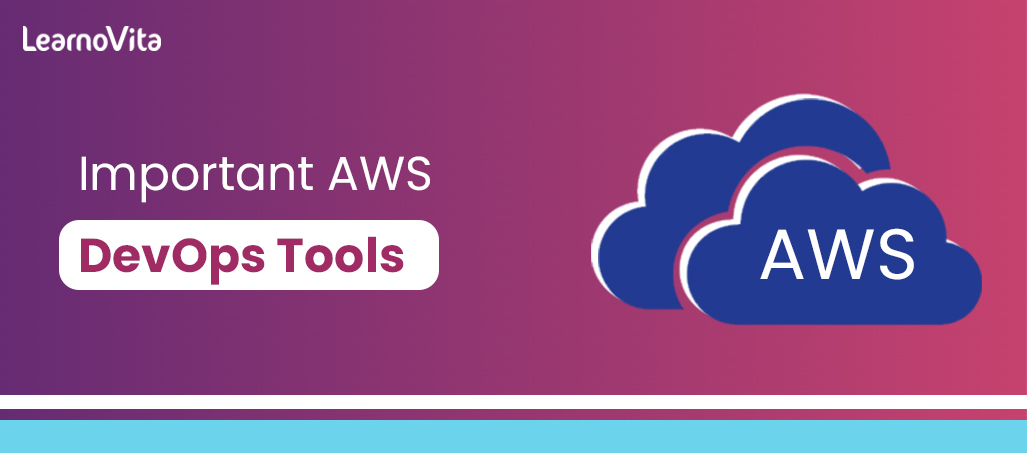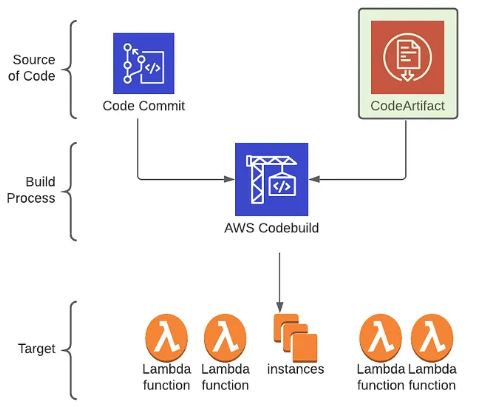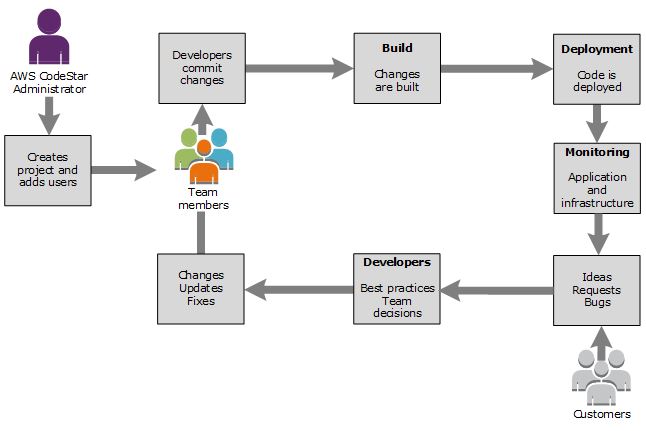- What is AWS Elastic Beanstalk? | A Complete Guide For Beginners
- What is Azure Devops? | A Comprehensive Guide
- What is Devops Engineer? | Roles and Responsibilities
- What is Blue Green Deployment? : The Ultimate Guide | Step-By-Step Process
- Introduction to Docker Images and Containers |A Definitive Guide with Best Practices [ OverView ]
- DevOps Tools for Database Deployment Automation | All you need to know [ OverView ]
- Top AWS DevOps Tools for Cloud Build and Deployment | A Complete Guide with Best Practices
- The Rise of DevOps: What It Is & How It Helps Businesses [OverView]
- Why DevOps and What it Means for Federal Agencies | How its Work [ OverView ]
- What is Chaos Engineering? : The Ultimate Guide | Principles of Chaos Engineering [ OverView ]
- Top Most DevOps Security Tools | The Ultimate Guide with Expert’s Top Picks
- What is Continuous Integration in Jenkins | A Complete Beginners Guide | REAL-TIME Examples
- Best CI/CD Tools Used by Programmers | Everything You Need to Know | Expert’s Top Picks
- Difference between Docker and Virtual Machine | A Definitive Guide and Which Should You Learn?
- Top Features of Docker | Everything You Need to Know [ OverView ]
- What is DevOps? : A Complete Guide with Best Practices
- Docker Alternatives and Their Standout Features [ OverView ]
- What is AWS DevOps ? All you need to know [ OverView ]
- Terraform vs Ansible: Key Differences Among Terraform and Ansible
- Docker vs Kubernetes | Difference You Should Know
- DevOps Build Tools List
- Ansible Vs Kubernetes
- DevOps Engineer Salary, Roles and Responsibilities
- Ansible vs. Puppet
- What is Puppet?
- Agile vs DevOps
- What is Docker Container?
- How to Install Jenkins on Windows?
- What is AWS Elastic Beanstalk? | A Complete Guide For Beginners
- What is Azure Devops? | A Comprehensive Guide
- What is Devops Engineer? | Roles and Responsibilities
- What is Blue Green Deployment? : The Ultimate Guide | Step-By-Step Process
- Introduction to Docker Images and Containers |A Definitive Guide with Best Practices [ OverView ]
- DevOps Tools for Database Deployment Automation | All you need to know [ OverView ]
- Top AWS DevOps Tools for Cloud Build and Deployment | A Complete Guide with Best Practices
- The Rise of DevOps: What It Is & How It Helps Businesses [OverView]
- Why DevOps and What it Means for Federal Agencies | How its Work [ OverView ]
- What is Chaos Engineering? : The Ultimate Guide | Principles of Chaos Engineering [ OverView ]
- Top Most DevOps Security Tools | The Ultimate Guide with Expert’s Top Picks
- What is Continuous Integration in Jenkins | A Complete Beginners Guide | REAL-TIME Examples
- Best CI/CD Tools Used by Programmers | Everything You Need to Know | Expert’s Top Picks
- Difference between Docker and Virtual Machine | A Definitive Guide and Which Should You Learn?
- Top Features of Docker | Everything You Need to Know [ OverView ]
- What is DevOps? : A Complete Guide with Best Practices
- Docker Alternatives and Their Standout Features [ OverView ]
- What is AWS DevOps ? All you need to know [ OverView ]
- Terraform vs Ansible: Key Differences Among Terraform and Ansible
- Docker vs Kubernetes | Difference You Should Know
- DevOps Build Tools List
- Ansible Vs Kubernetes
- DevOps Engineer Salary, Roles and Responsibilities
- Ansible vs. Puppet
- What is Puppet?
- Agile vs DevOps
- What is Docker Container?
- How to Install Jenkins on Windows?

Top AWS DevOps Tools for Cloud Build and Deployment | A Complete Guide with Best Practices
Last updated on 04th Nov 2022, Artciles, Blog, DevOps
- In this article you will learn:
- 1.Amazon Corretto.
- 2.AWS Cloud9.
- 3.AWS CloudShell.
- 4.AWS CodeArtifact.
- 5.AWS CodeBuild.
- 6.AWS CodeCommit.
- 7.AWS CodeDeploy.
- 8.AWS CodePipeline.
- 9.AWS CodeStar.
- 10.AWS Fault Injection Simulator.
- 11.AWS X-Ray.
- 12.Conclusion.
Amazon Corretto:
Amazon Corretto is the no-cost multiplatform production-ready distribution of a Open Java Development Kit (OpenJDK). Corretto comes with a long-term support that will include a performance enhancements and security fixes. An Amazon runs a Corretto internally on a thousands of a production services and Corretto is certified as compatible with a Java SE standard. With the Corretto can develop and run a Java applications on famous operating systems including an Amazon Linux 2 Windows and a macOS.
AWS Cloud9:
AWS Cloud9 is the cloud-based integrated development environment (IDE) that lets are write, run, and debug your code with just browser. It includes the code editor, debugger, and terminal. AWS Cloud9 comes a prepackaged with important tools for a popular programming languages, including the JavaScript, Python, PHP and more. so don’t need to install a files or configure a development machine to start new projects. Since a AWS Cloud9 IDE is a cloud-based and can work on a projects from a office, home, or anywhere using the internet-connected machine. AWS Cloud9 also offers a seamless experience for a developing serverless applications enabling to easily explain resources, debug and switch between the local and remote running of a serverless applications. With an AWS Cloud9 can quickly share the development environment with a team enabling to pair program and track each other’s inputs in a real time.

AWS CloudShell:
AWS CloudShell is the browser-based shell that makes it simple to securely manage, explore and interact with an AWS resources. CloudShell is pre-authenticated with a console credentials. A Common development and operations tools are be pre-installed so no local installation or configuration is required. With a CloudShell, can quickly run scripts with an AWS Command Line Interface (AWS CLI), experiment with a AWS service APIs using a AWS SDKs or use a range of other tools to be a productive. can use a CloudShell right from a browser and at no additional cost.
AWS CodeArtifact:
AWS CodeArtifact is the fully managed artifact repository service that makes it simple for an organizations of any size to be securely store, publish, and share software packages used in a software development process. A CodeArtifact can be configured to an automatically fetch software packages and dependencies from a public artifact repositories so developers are have access to a latest versions. A CodeArtifactworks with commonly used a package managers and build tools like a Maven, Gradle, npm, yarn, twine, pip and NuGet making it simple to integrate into existing a development workflows.
AWS CodeBuild:
AWS CodeBuild is the fully managed build service that are compiles a source code, runs tests and produces a software packages that are ready to deploy. With CodeBuild don’t need to provision manage, and scale an own build servers. A CodeBuild scales are continuously and processes multiple builds concurrently so builds are not left waiting in the queue. Can get started quickly by using a prepackaged build environments, or can create a custom build environments that use the own build tools.
AWS CodeCommit:
AWS CodeCommit is the fully managed source control service that are makes it simple for companies to host secure and a highly scalable private Git repositories. AWS CodeCommit removes the need to operate an own source control system or worry about scaling its infrastructure. And can use a AWS CodeCommit to securely store anything from a source code to binaries and it works seamlessly with an existing Git tools.
AWS CodeDeploy:
AWS CodeDeploy is the service that automates code deployments to be any instance including EC2 instances and instances running on premises. CodeDeploy makes it simpler for to rapidly release a new features helps to avoid downtime during application deployment and handles the complexity of updating a applications. And can use a CodeDeploy to automate software deployments eliminating need for error-prone manual operations. The service scales with an infrastructure so can easily deploy to the one instance or thousands.
AWS CodePipeline:
AWS CodePipeline is the fully managed continuous delivery service that helps to automate a release pipelines for a fast and reliable application and infrastructure updates. CodePipeline automates a build, test and deploy phases of a release process an every time there is a code change, based on release model define. This enables to rapidly and reliably deliver the features and updates. And can easily integrate CodePipeline with a third-party services like GitHub or with the own custom plugin. With an AWS CodePipeline, and only pay for what use. There are no upfront fees or a long-term commitments.

AWS CodeStar:
AWS CodeStar enables to quickly develop, build, and deploy the applications on AWS. AWS CodeStar offers a unified user interface, enabling to easily manage a software development activities in one place. AWS CodeStar, can set up an entire continuous delivery toolchain in minutes allowing to start releasing code faster. AWS CodeStar makes it simple for a whole team to work together securely allowing to easily manage access and add owners, contributors and viewers to the projects. Every AWS CodeStar project comes with the project management dashboard, including an integrated problem tracking capability powered by a Atlassian JIRA Software. With an AWS CodeStar project dashboard, can easily track progress across an entire software development process, from a backlog of work items to teams’ are recent code deployments. For more information refer to be AWS CodeStar features.
AWS Fault Injection Simulator:
AWS Fault Injection Simulator is the fully managed service for a running fault injection experiments on AWS that makes it simpler to improve an application’s performance, observability and also resiliency. Fault injection are experiments are used in a chaos engineering which is the practice of stressing the application in testing or production environments by creating a disruptive events like a sudden increase in CPU or memory consumption observing how a system responds and implementing improvements. A Fault injection experiment helps to teams create the real-world conditions needed to be uncover a hidden bugs, monitoring blind spots, and performance bottlenecks that are be complex to find in a distributed systems.
AWS Fault Injection Simulator are simplifies a process of setting up and running controlled fault injection experiments across the range of AWS services so teams can build a confidence in application behavior. With aFault Injection Simulator teams can be quickly set up experiments using a pre-built templates that generate a desired disruptions. AWS Fault Injection are Simulator provides a controls and guardrails that teams need to run an experiments in production like automatically rolling back or stopping an experiment if specific conditions are met. With the few clicks in the console teams can run a complex scenarios with common distributed system failures happening in parallel or building sequentially an over time enabling them to create a real world conditions necessary to be find hidden weaknesses.
AWS X-Ray:
AWS X-Ray helps to developers analyze and debug a distributed applications in a production or under development, such as those built using a microservices architecture. X-Ray can understand how a application and its underlying services are performing so can identify and troubleshoot the root cause of a performance issues and errors. X-Rayoffers an end-to-end view of requests as they are travel through application and shows a map of a application’s underlying components. can use a X-Ray to analyze both the applications in development and in production from a simple three-tier applications to be complex microservices applications consisting of a thousands of services.
Conclusion:
AWS DevOps provides a comprehensive selection of tools to build and deploy a software in a cloud.